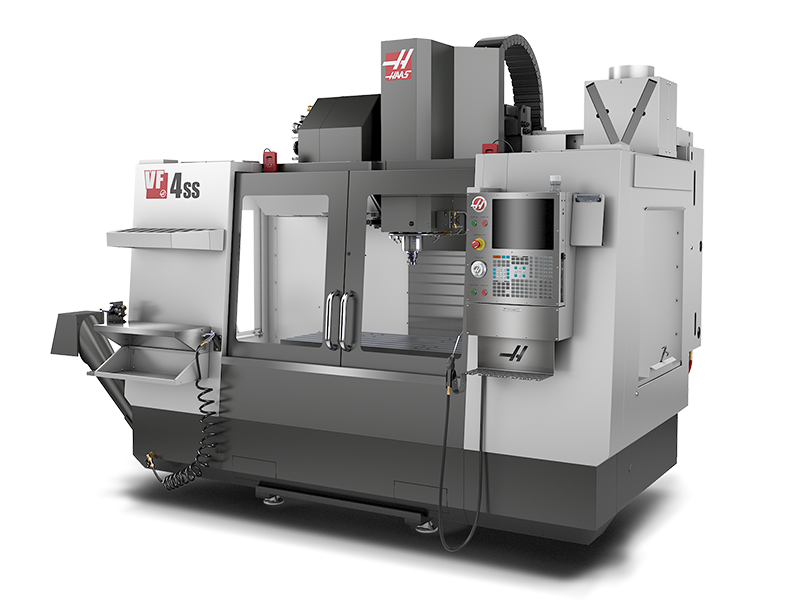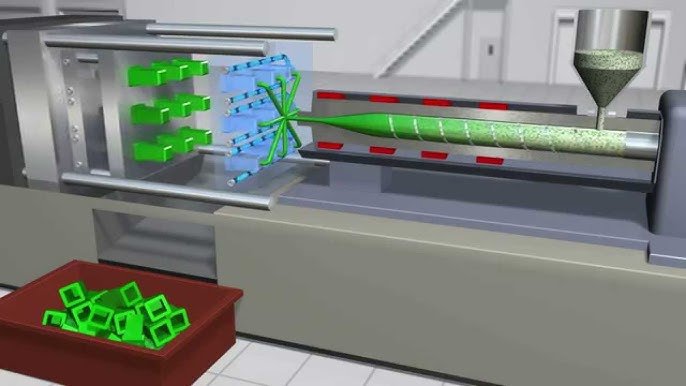A Brief Overview of Manufacturing Processes
As designers, we should be aware of as many manufacturing processes as possible. The more processes we know about, the more effectively we are able to manufacture a good product. I aim to provide you with a short list of processes in which you can find inspiration for how to best make your product. There are many categories of manufacturing processes, each of which has its own limitations, advantages, common applications, and usable materials. Along with each process, I will include a link to a site that will give you more information than I can give in this short article.
SUBTRACTIVE PROCESSES
CNC Mills and Lathes:
CNC (Computer Numeric Controlled) Mills and Lathes are capable of high control, precision, and speed, enabling huge, production-scale work. With this high level of automation and larger machines, the costs and skills associated with CNC are much higher than with manual machining. These machines are controlled through a g-code program from a 3D model. With a good program, these machines can run without human interaction, except to change out the stock material (although this can also be automated with the addition of robots). CNC mills and lathes can run tirelessly and produce consistent results with every part it churns out. [1]
Tolerances: Within .005” in every axis, on every part.
Common Applications: Production scale parts, High tolerance/complex parts, materials with poor machinability
Further Reading: A Complete Guide to Standard Machining Tolerances
A HAAS 3-axis CNC Mill | Picture from HAAS Website
Electrical Discharge Machining (EDM)
The EDM process involves conducting electricity through an electrode to melt the stock material into the desired shape. EDM is incredibly useful in its ability to produce sharp corners and deep cavities that aren’t possible with traditional machining processes. This is a very slow process but produces a high-quality surface finish with extremely high tolerances, however, it can machine materials that aren’t machinable with other processes, as long as they conduct electricity. [2]
Tolerances: Up to .0004” in dimensions and angles
Common Applications: Injection molding, engraving, 2D profiles
Further Reading: What is Electrical Discharge Machining? | UK EDM Service
ADDITIVE PROCESSES
3D Printing:
This is one of the most versatile and cutting-edge processes around. While it is fairly new, 3D printing is already being implemented in most industries. From aerospace to cooking and everything in between, you can find some form of 3D printing. 3D printing itself is composed of numerous subcategories (Sintering, FDM, SLA, etc.) each with its own capabilities and specialties. 3D printing constitutes taking a digital model sliced into layers, turning that in g-code, and uploading that into your machine. The machine then follows the g-code to build the print up layer by layer, producing a high-quality part that needs a little bit of post-processing to be finished. 3D printing can now be done with plastic, carbon fiber, metal, concrete, and even chocolate.
Tolerances: Depending on the type of 3D printing, up to .004” in dimensions and angles.
Common Applications: Prototyping, complex geometries, biomedical prosthetics
Further Reading: Guide to 3D Printing Tolerances, Accuracy, and Precision | Formlabs
JOINING PROCESSES
Welding:
An example of SMAW welding (also known as stick welding) | Picture from unimig.com.au
Welding is a highly versatile process that can be tailored to any number of materials and situations. Welding processes require training to be successful, but when done right can produce incredibly strong and functional joints. Metal welding processes (GTAW, SMAW, oxyacetylene, etc.) generally take some form of filler metal and a high heat source to melt and bind two pieces together. These processes can alter the molecular structure and need post-processing to be finalized.
Tolerances: Varies based on the process, anywhere from .01” to .6”, in weld bead size and joint accuracy.
Common Applications: As many applications as fish in the sea. Shipbuilding, plumbing, fabrication, electronics, etc.
Further Reading: Summary of Welding Processes
CASTING PROCESSES
Most casting processes are fairly similar, so I will list them after this introduction and briefly outline their uniqueness, tolerances, and common applications. Casting processes involve pouring melted metal into a cavity and allowing it to cool. These processes often have larger upfront costs to purchase the necessary tooling and heating apparatus, but can reliably produce high-quality, complex, solid metal parts.
Die Casting:
Unique: Permanent, metal mold capable of high-volume production
Tolerances: Up to .001” is possible but can add unnecessary cost.
Common Applications: Automotive and aerospace [3]
Further Reading: Precision Die Casting | Aluminum Cast | Die Cast Tolerances
Investment Casting:
Unique: Wax pattern dipped into a slurry and then melted out of the hardened slurry shell, can use PLA 3D-printed parts as wax patterns.
Tolerances: Between .037” and .004” depending on the size of the part. [4]
Common Applications: Turbine blades, golf club heads, complex geometries
Further Reading: Investment Casting | Metal Casting Resources
Shell Casting:
Unique: Thermosetting resin hardened onto a heated pattern
Tolerances: According to one manufacturer, up to .0002” tolerance can be achieved [5]
Common Applications: Shell-like structures (i.e. truck hoods, boat hulls, drum shells, etc.)
Further Reading: Shell Mould Casting - One of many casting options from NovaCast
Sand Casting:
Unique: Mold made of sand packed around the pattern, oldest method of casting
Tolerances: Around .03”
Common Applications: pistons, bearings, gears, jewelry
Further Reading: Sand Casting Advantages & Process - Aluminum, Bronze & Brass Casting | LB Foundry
MOLDING:
Injection Molding:
This versatile process involves creating a mold out of metal (usually aluminum for its heat dissipation properties) through subtractive machining. With gates, runners, and sprues machined correctly, melted plastic can be injected at up to 200 tons of pressure into the cavity. The plastic fills the cavity, cools, and is then ejected into a processing bin. Most plastics can be injected into these molds, each of course, requiring their own special settings.
Tolerances: Because the mold for this process is made through CNC machining, it’s tolerances are much the same at .005”, if not more consistent and repeatable.
Common Applications: High-volume production, low-cost parts for any industry
Further Reading: The outline of injection molding and Designing for Injection Molding
Ananimated rendering of the Injection Molding process | Rendering from the HUBS YouTube channel
There are so many manufacturing processes that haven’t been mentioned and each one that has already been discussed deserves an entire article just on how to design for its specific applications. In closing, I would like to leave with a message on Design for Manufacturing and Assembly. DFMA is the step that takes a working prototype to a producible product. If you are able to design your parts with the way they will be made in mind, then the process of getting them in the hands of consumers will be that much more swift. Good DFMA practices will enable high-volume, high-quality production and minimize the need for reengineering and reestimating the timeline and cost of products. I hope that this article can inspire you to make your parts with the best process possible.
References:
[1] https://www.3erp.com/blog/cnc-machining-vs-manual-machining/
[2] https://get-it-made.co.uk/resources/what-is-electrical-discharge-machining
[3] https://www.rapiddirect.com/blog/what-is-die-casting/
[5] Shell Mould Casting - One of many casting options from NovaCast
To cite this article:
Cousins, Andrew. “A Brief Overview of Manufacturing Processes.” The BYU Design Review, 28 Nov. 2023, https://www.designreview.byu.edu/collections/a-brief-overview-of-manufacturing-processes.








